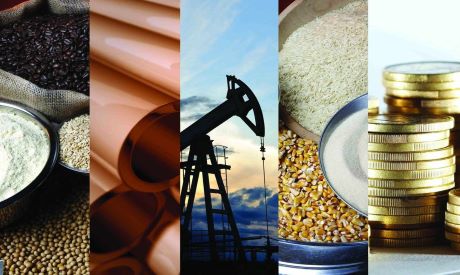To read the full report, please download the PDF above.
Executive summary│Commodities markets 2024 outlook
Pausing our supercycle thesis but underinvestment’s revenge will bite
Commodities underperformed all assets in 2023
Our commodities conviction skews neutral for 2024
Structural underinvestment remains unresolved and will bite once macro headwinds ebb
We call pause on our supercycle thesis which is merely delayed – not derailed
Higher capex remains the only solver of structural investment but next cycle will be disorderly given ESG investing
We recommend tactical positioning across the commodity sub-groups in an era of heightened uncertainty
- After two extraordinary years of double-digit returns in 2021 and 2022, commodities contracted and underperformed every major asset class in 2023.
- A confluence of mild weather, Russian sanctions underestimation, tepid China reopenings, acute central bank tightenings and a stronger US dollar mired commodity markets this year.
- As we look into 2024, our high-level conviction is that commodity price risks skew neutral.
- From a bullish lens, cyclical forces of a fading monetary policy drag and receding recession fears should support demand, which combined with, ongoing backwardation (signalling supply tightness) across most major commodities, should provide structural strength.
- Whilst from a bearish context, the pivot from recession obsession to “higher for longer” monetary policy could cause ongoing stress across the global macro backdrop, especially if activity in the goods sector does not pick up in 2024, leading to an extension in this year’s manufacturing malaise.
- Beyond these near-term forces that will shape the commodities complex in 2024, the long-term structural challenges facing commodities remain unresolved.
- Decarbonisation, deglobalisation, the structural rise in demand induced by government policies around redistribution and the near-decade of underinvestments in carbon-intensive capex with supply scarcity inadequate to meet today’s policy-induced demand – the principles of our supercycle commodities thesis (see here) – are set to move top of mind as soon as the current macro headwinds are in the rear-view mirror.
- With that, we call pause to our supercycle thesis today, but critically caution that the supply-constrained decades-long bull market is merely delayed – not derailed – given the near-decades-long structural underinvestment in physical commodities.
- The Fed’s attempt to soft land the economy through higher for longer rates that lowers demand and inflation may relieve the symptoms of underinvestment (commodity inflation), but cannot cure the underlying illness of inadequate production capacity. Yet, without sufficient capex to de-bottleneck the system and provide excess capacity, commodities will remain stuck in a state of long-run shortages, with higher and more volatile prices.
- When Fed Chair Volcker tamed inflation through sharp increases in the Fed Funds Rate between 1980-81, it was after a decade of rising capex during Fed Chair Burns’ period in office, that allowed the subsequent fall in demand the space to debottleneck global supply chains.
- Fast forward to today, a new investment cycle has yet to emerge and when it does it will likely be disorderly and prolonged as ESG investing (fairly) influences capital flows needed to stimulate the next round of investment.
- What is clear is that greening the global economy will be expensive as carbon is everywhere – powering the real economy from hydrocarbons to carbohydrates – with the scarcity premium for transition-prone commodities proving a recipe for persistent price spikes (and with it inflationary pressures) this decade.
- Examining commodity sub-groups, we recommend tactical positioning to harvest returns in an era where inflation is nearing target, no signs of an imminent US recession and markets are already pricing for a soft landing:
- Energy (neutral-to-bullish). Active OPEC+ market management will aim to maintain the USD80-100/b oil corridor, whilst in gas markets, European tightening risks offsets the US bearish skew.
- Base metals (neutral). Stuck in a tactical trading range without firm evidence of either a recession (necessary for further capitulation) or ex-China demand recovery (necessary for a sustained break higher).
- Precious metals (bullish). Gold – our most bullish call – to hit record levels in 2024 on a trifecta of Fed cuts, supportive central bank demand and bullion’s role as the geopolitical hedge of last resort.
- Agriculture (neutral-to-bullish). Geopolitical tensions are inhibiting supply-side normalisation, El Nino weather conditions remain threatening and China’s agricultural import demand recovery is underway.


